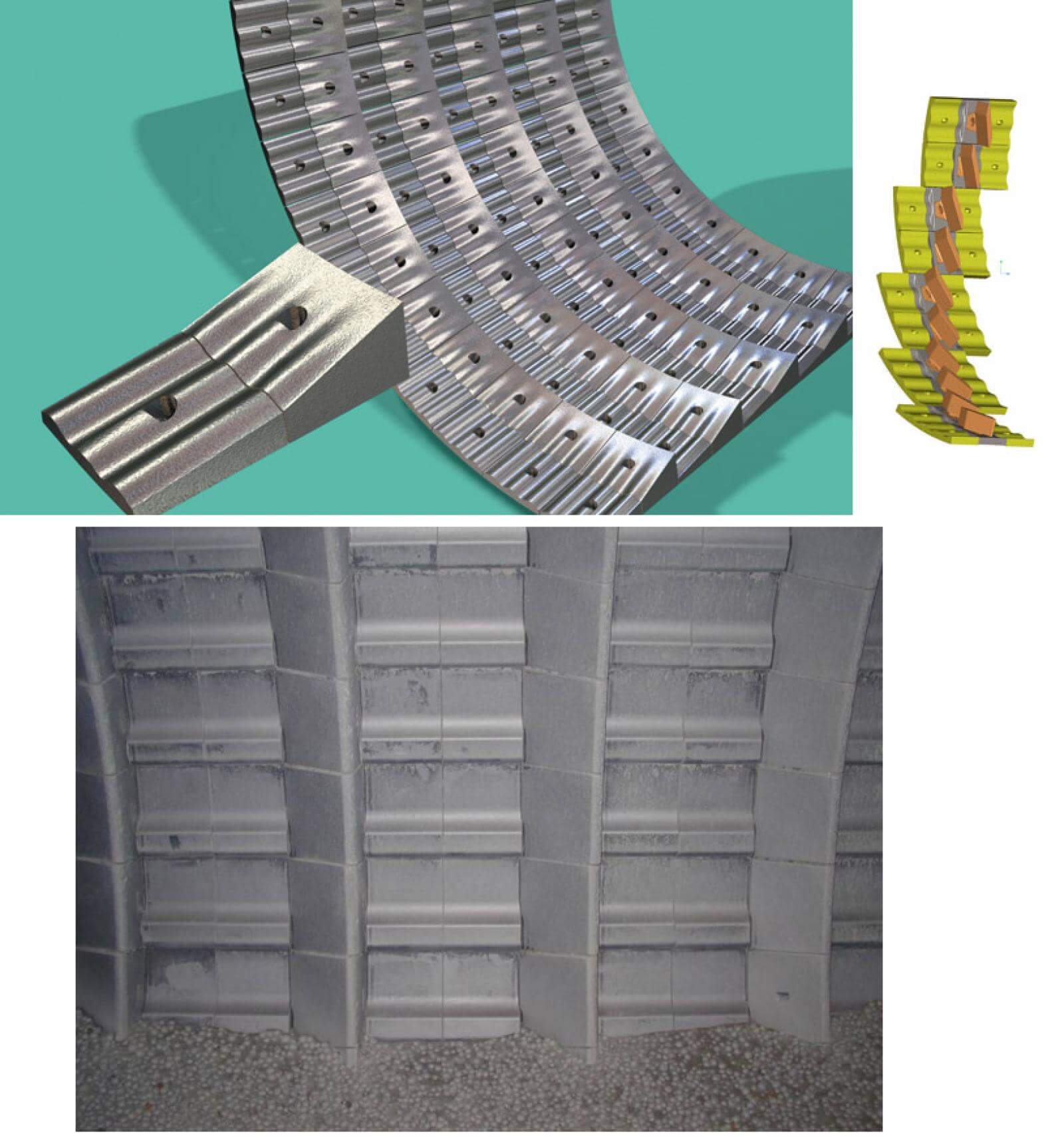- To participate in the 911Metallurgist Forums, be sure to JOIN & LOGIN
- Use Add New Topic to ask a New Question/Discussion about Grinding.
- OR Select a Topic that Interests you.
- Use Add Reply = to Reply/Participate in a Topic/Discussion (most frequent).
Using Add Reply allows you to Attach Images or PDF files and provide a more complete input.
- Use Add Comment = to comment on someone else’s Reply in an already active Topic/Discussion.
-
https://www.911metallurgist.com/wp-content/plugins/wp-symposium-pro/forums/../css/images/wait.gif
Classifying Liners (5 replies and 2 comments)
Please join and login to participate and leave a comment.


I'm faced with contradictory claims concerning classifying liner regarding their effectiveness, energy efficiency or applicability for high tonnage or hard/abrasive ores. Litterature is really scarce on this subject.
Classifying liners are a kind of ball mill liners who's main role besides providing shell protection and charge motion is to induce a longitudinal balls segregation of the charge based on their size. In short they classify the balls from large feed end to small ones discharge end. This is an old idea as some patents date back to 1958 but they are mainly used in clinker grinding. https://docs.google.com/viewer?url=patentimages.storage.googleapis.com/pdfs/US2967671.pdf
My basic question is : Some, including manufacturers of these classifying liners, claim that these liners are very effective for energy efficiency. Others say they do not work. And for the most part none of the two sides gives sound evidence of their claims or back them with detailed studies.
So my question : Does anyone in the here know of some sound and balanced reference on the matter ?
Has anyone tried them and compared them with classical liners and could share his experience?
As for those who question explicitly the efficiency of the technology based on "experimental/industrial" survey there is conference paper by the (then?) Milling Manager of FLSmidht back in 2006[2]. In particular there we one can find a table comparing the specific power consumption (for the same blaine) of "straight" liners and "classifying" liners. Surprisingly the study concludes to the disadvantage of these later.
I cite this reference because it is the only one I've found presenting this kind of comparative analysis., Even though, for one, the same manufacturer propose these type of liners in his portfolio [3]. And second, I've never found any citation of this reference which is unusual for the least for a paper backed by industrial comparative survey. And last the main objective of the study-paper was to promote FLSmidth HES system as a better solution than classifying liners.
Back to those who promote this technology : an online leaflet (Vega) advances figures comparing an old second chamber liner (Dragpeb) with their classifying liners. Here they get/claims great achievement. To note that Dragpeb were Tile-type liners FLSmidth used to promote. They no longer make them I guess as a search for Dragpeb in their site gives no result. These are in a scare form with wavy thin oblique valley. So I suppose that if they were clock-turned on the wrong side they sure will classify in the wrong direction. So the finding/claim of Vega could be no such a surprise if it was the case in the original mill. I purely speculate here but let me share with you this "funny exchange" in a site for cement industry. I guess finishing the week with a smile will not be a bad idea:
http://www.cemnet.com/Forum/thread/108576/grinding-ball-classification.html
http://www.thecementgrindingoffice.com/millsinternals2.html
Some ball mills around there are really a black box.
[1]Ball motion, axial segregation and power consumption in a full scale two
chamber cement mill, Minerals Engineering 22 (2009) 809–820
[2]Ball charge loading - impact of specific power consumption
http://www.flsmidth.com/~/media/Brochures/Brochures%20for%20cement%20grinding-gears%20and%20silos/FLSBallMill.ashx